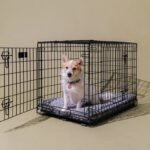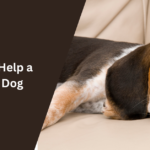To Dog-proof your home by securing trash cans, storing food and cleaning products out of reach, and hiding electrical cords. Block off unsafe areas with gates, keep small objects off the floor, and provide safe chew toys to prevent destructive behavior. Regularly check for hazards to create a safe, dog-friendly environment.
Assess Your Home’s Danger Zones
Before bringing your new furry friend home, I recommend conducting a thorough safety inspection of your living space. Looking at your home from a dog’s perspective reveals numerous potential hazards that might go unnoticed at human eye level.
Common Hazards at Dog Level
The most immediate dangers often lurk at your pet’s height. Electrical cords and power strips present serious risks of electrocution through chewing. Furthermore, open-structure stairs and railings pose falling hazards, particularly for smaller dogs.
Space heaters and electrical appliances within reach create burn risks. Additionally, loose items like shoes, socks, and small decorative objects become potential choking hazards. Household plants require special attention since many common varieties can be toxic to dogs.
High-Risk Areas to Secure First
Several rooms in your home require immediate attention:
Bathroom Safety Bathrooms harbor numerous dangers, including:
- Medications and personal care products
- Sharp objects like razors
- Cleaning chemicals under sinks
- Open toilets that present drowning risks for smaller dogs
Garage and Workshop Threats These areas contain particularly dangerous items:
- Tools and loose nails
- Toxic substances like antifreeze
- Pesticides and fertilizers
- Car maintenance products
Living Space Considerations In main living areas, pay attention to:
- Window screens must be secure to prevent falls
- Fireplace areas need proper barriers
- Balconies require additional protection against falls
- Reclining chairs can trap small pets
Laundry Room Precautions The laundry area presents unique challenges:
- Keep washer and dryer doors closed to prevent pets from climbing inside
- Store cleaning products and bleach in secured cabinets
- Clean up any chemical spills immediately
For maximum safety, consider creating designated “safe zones” where your dog can stay when unsupervised. These areas should be thoroughly checked and maintained regularly. Installing baby gates helps restrict access to potentially dangerous areas without completely isolating your pet.
Secure the Kitchen and Bathroom
Kitchens and bathrooms present unique challenges when dog-proofing your home. These areas contain numerous items that could harm your furry friend, ranging from toxic cleaning supplies to tempting food scraps.
Safe Storage Solutions
First things first, store all food in airtight containers to maintain freshness and prevent unwanted access. Label these containers with expiration dates for easy tracking. Moreover, transfer bagged food to secure containers after cutting both sides of the bag flat to eliminate suffocation hazards.
For cleaning supplies and medications, standard child-proof caps offer minimal protection against determined chewers. Instead, install secure cabinet latches and store these items on high shelves. Notably, human medications can be fatal for dogs, making proper storage in closed medicine cabinets absolutely necessary.
Preventing Counter Surfing
To prevent counter-surfing incidents:
- Clear counters immediately after food preparation
- Store all food items in closed cupboards or the refrigerator
- Keep supplements and medications in cabinets
- Position knife blocks away from counter edges
- Clean surfaces thoroughly to eliminate enticing food odors
For enhanced safety, consider installing an induction cooktop – it only heats the pan and cools quickly, protecting curious paws from burns.
Managing Trash and Food Access
For food storage safety:
- Maintain temperatures below 80°F for dry pet food
- Store food in original bags with tops tightly folded
- Keep pet food in designated cabinets or drawers
- Clean storage containers regularly to prevent bacterial growth
Remember that dogs don’t raid trash out of spite – it’s an instinctual behavior. Consequently, prevention works better than correction. Consider placing trash cans behind baby gates or in secured cabinets when you’re away.
Dog-Proof Living Spaces
Living spaces often become the heart of interaction between pets and their families. Creating a dog-friendly environment requires thoughtful consideration of both furniture protection and safety measures.
Protecting Furniture and Decor
Selecting the right furniture materials makes a significant difference in maintaining your home’s esthetics. Leather stands out as an excellent choice, offering durability and easy cleaning properties. Although leather might show scratches, these marks add character over time. For those preferring animal-free alternatives, pleather provides similar benefits with added affordability.
Cable Management Tips
Several effective cable management solutions exist:
Self-Adhesive Raceways: These blend seamlessly above baseboards or cover vertical cables dropping from wall-mounted TVs. Quarter-round cable hiders provide discrete protection at floor level, effectively concealing tempting wires from curious pets.
Cable Organizer Boxes: These containers safely house socket extensions and cable clusters, eliminating exposed cords that might attract attention. Additionally, spiral wrap and cable tubes offer flexible protection options for various wire configurations.
For optimal cable safety:
- Position cords away from high-traffic areas
- Use adhesive-backed cord clips to secure cables against surfaces
- Raise cables off the floor whenever possible
Create Safe Sleeping Areas
Creating a dedicated sleeping area ranks among the most vital aspects of dog-proofing your home. A well-designed sleeping space offers your furry companion both physical comfort and emotional security.
Setting Up a Dog-Safe Bedroom
For optimal safety, consider these essential elements:
- Install hypoallergenic bedding to minimize reactions
- Use waterproof mattress protectors for senior dogs with incontinence
- Keep electrical outlets covered and wires hidden
- Remove small objects that could become choking hazards
- Store clothes in closed drawers or elevated closets
Choosing the Right Bed Location
Consider these factors when selecting the perfect spot:
- Noise levels – Choose a quiet area away from household traffic
- Temperature control – Ensure the space stays cool in summer and warm in winter
- Lighting conditions – Position the bed away from intense light sources
- Accessibility – Keep the location easily reachable yet not in walkways
For multi-pet households, creating separate sleeping zones helps prevent territorial disputes. Window perches or elevated areas work well for cats sharing space with dogs. For senior pets who can no longer jump onto furniture, install ramps or place sturdy benches near the bed – these 18-inch-high alternatives offer easier access than traditional pet stairs.
Install Essential Safety Products
Safety products serve as the backbone of a well-protected home for your four-legged companion. From sturdy gates to innovative protection tools, these essential items create secure boundaries while maintaining accessibility.
Best Gates and Barriers
For wider spaces, the Frisco Steel Extra Wide Auto-Close Dog Gate accommodates openings up to 53 inches. This gate features three adjustable panels, allowing customization based on your doorway size. The auto-close mechanism ensures the gate never remains accidentally open.
When selecting gates, consider these crucial factors:
- Height appropriate for your dog’s jumping ability
- Multiple locking mechanisms for enhanced security
- Sturdy construction materials
- Easy one-handed operation for humans
Must-Have Protection Tools
For outdoor spaces, weather-resistant barriers prove essential. The Cardinal Gates SS30OD, crafted from rustproof aluminum and stainless steel, withstands environmental challenges while maintaining functionality. This option works perfectly for deck entryways or other outdoor areas requiring secure boundaries.
Protection tools worth considering:
- Spring-loaded cabinet locks
- Magnetic safety latches
- Covered trash receptacles
- Cable management systems
- Window guards
Studies indicate that proper safety tools can decrease aggressive dog encounters by up to 70%. Furthermore, research shows that 80% of dog-related injuries can be prevented through appropriate training and safety equipment.
Establish House Rules
Establishing clear house rules from day one creates a foundation for a well-behaved, happy dog. By setting consistent boundaries alongside positive reinforcement training, I ensure my furry friend understands what behaviors are acceptable in their new environment.
Training Tips for New Areas
Positive reinforcement emerges as the most effective method for teaching good behavior. Rather than punishing unwanted actions, rewarding desired behaviors with treats, praise, or affection strengthens our bond. This approach helps dogs learn faster while building confidence in their new surroundings.
Basic commands form the cornerstone of a well-trained dog. These essential commands include:
- Sit: Promotes calm behavior in various situations
- Stay: Prevents rushing into potentially dangerous areas
- Come: Ensures reliable recall when needed
- Leave it: Stops dogs from picking up harmful items
- Drop it: Gets them to release dangerous objects
- Heel: Keeps them close during walks
For optimal results, I maintain short, frequent training sessions. This approach helps dogs learn effectively without becoming overwhelmed or losing focus. Furthermore, consistency proves crucial – all family members must use identical commands and rewards to prevent confusion.
Setting Boundaries Early
Some fundamental boundaries worth considering:
- Designate specific areas as off-limits
- Establish consistent feeding and potty schedules
- Define furniture access rules
- Set clear expectations for greeting visitors
Alongside these basics, creating designated “safe zones” helps dogs understand their space within the home. These areas might include their crate, bed, or specific rooms where they can retreat when feeling overwhelmed.
Conclusion
Dog-proofing requires dedication and attention to detail, but the safety of our furry friends makes every effort worthwhile. My comprehensive guide covers essential aspects from securing dangerous items to creating safe spaces throughout your home.
Most importantly, remember that dog-proofing isn’t a one-time task. Regular safety checks help identify new hazards as your dog grows and explores. Additionally, maintaining consistent house rules alongside proper safety measures creates a secure environment where your pet can thrive.
Safety products like gates, locks, and barriers work together with training to prevent accidents. Therefore, combining physical protection with positive reinforcement training gives your dog the best chance to stay safe while learning appropriate behavior.
I’ve loved dogs all my life and have cared for many different breeds over the years. Here, I share simple tips, stories, and helpful advice for all dog lovers. Whether you’re a new pet parent or a lifelong dog fan, you’ll find something useful and fun on my site.


